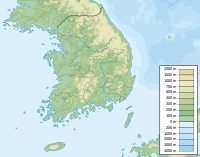
Photo from wikipedia
Abstract Many aspects of the palaeontology of the Isle of Wight are well known, but less so its ichnology. A turtle bone, Emys? sp., from the Lower Oligocene (Rupelian) Hamstead… Click to show full abstract
Abstract Many aspects of the palaeontology of the Isle of Wight are well known, but less so its ichnology. A turtle bone, Emys? sp., from the Lower Oligocene (Rupelian) Hamstead Member, Bouldnor Formation, exposed on the north coast of the island, preserves an unusual surface etching. Dictyoporus nodosus Mägdefrau is recorded from the Paleogene for the first time; hitherto, in northern Europe, it was only known from the Mesozoic. This is also its first record in bone. The trace fossil is an elongate reticulate structure which extended onto adjacent parts of the skeleton (not preserved). Morphologically, identical borings in hard substrates should be included in the same ichnogenus; the nature of the substrate – wood, limestone, bone – is a poor ichnotaxobase. Thus, the clavate bone boring, Karethraichnus Zonneveld et al. is synonymized with Gastrochaenolites Leymerie, more common in limestone. The rarity of D. nodosus may be due to collection failure, in part; perhaps collectors are not looking for surface etchings.
Journal Title: Ichnos
Year Published: 2020
Link to full text (if available)
Share on Social Media: Sign Up to like & get
recommendations!